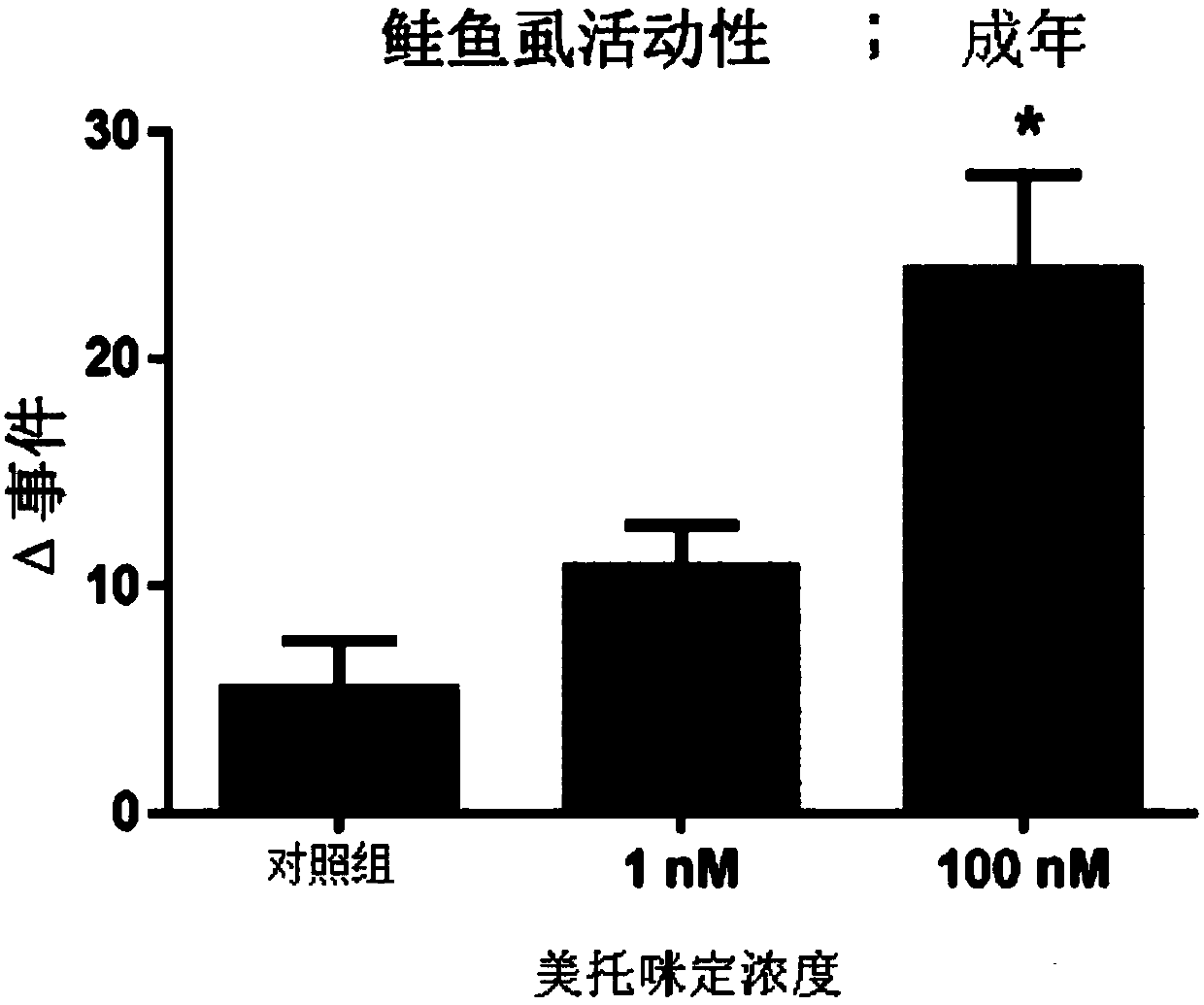Medetomidine for use in controlling parasitic crustaceans on fish
A technology of medetomidine and crustacea, which is applied in the field of medetomidine as an antifouling agent for marine environment, which can solve problems such as damage, fish pressure, fish farm production loss, etc.
Inactive Publication Date: 2018-01-19
I TECH A B (SE)
View PDF11 Cites 0 Cited by
- Summary
- Abstract
- Description
- Claims
- Application Information
AI Technical Summary
Problems solved by technology
However, this type of fish handling can also cause stress and damage to the fish and in some cases, loss of production from the fish farm
Method used
the structure of the environmentally friendly knitted fabric provided by the present invention; figure 2 Flow chart of the yarn wrapping machine for environmentally friendly knitted fabrics and storage devices; image 3 Is the parameter map of the yarn covering machine
View moreImage
Smart Image Click on the blue labels to locate them in the text.
Smart ImageViewing Examples
Examples
Experimental program
Comparison scheme
Effect test
Embodiment
[0069] Salmon lice test protocol
the structure of the environmentally friendly knitted fabric provided by the present invention; figure 2 Flow chart of the yarn wrapping machine for environmentally friendly knitted fabrics and storage devices; image 3 Is the parameter map of the yarn covering machine
Login to View More PUM
 Login to View More
Login to View More Abstract
Medetomidine or a salt thereof for use in controlling parasitic crustaceans, such as sea lice, on fish, e.g. salmon. A method of improving water flow into and out of a cage or net for fish farming, byproviding said cage or net with a surface coating containing medetomidine or a salt thereof in an amount effective to reduce biofouling of said cage or net. The coating is capable of releasing medetomidine or the salt thereof into the water in the cage or net in an amount effective to reduce or prevent parasitic infestation of the fish in the cage or net.
Description
technical field [0001] The invention relates to a new application of medetomidine as an antifouling agent for marine environment. Background technique [0002] Fish farming is a form of aquaculture, also known as pisciculture, for the production of food fish in freshwater, seawater or brackish water, usually using enclosures such as ponds, various forms of cages or nets. The most common food fish are carp, salmon, and catfish. [0003] Driven by the ever-increasing demand for fish and fish proteins, aquaculture today represents a large proportion of seafood production (estimated at about 40% in 2005) and is also highly economically affected. There are two types of fish aquaculture, extensive aquaculture (depending on local photosynthetic material production) and intensive aquaculture (depending on external food supply). Offshore farming involves submerged cages or nets with different geometries placed in the sea, the cages containing the fish by metal or plastic frames wit...
Claims
the structure of the environmentally friendly knitted fabric provided by the present invention; figure 2 Flow chart of the yarn wrapping machine for environmentally friendly knitted fabrics and storage devices; image 3 Is the parameter map of the yarn covering machine
Login to View More Application Information
Patent Timeline
 Login to View More
Login to View More Patent Type & Authority Applications(China)
IPC IPC(8): A61K31/4174A61P33/00
CPCA61K31/4174A61P33/00C02F1/00C02F1/688C02F2103/20C02F2303/04A01K63/04A61P33/14A61P43/00A01K61/13A01N43/50
Inventor 丹·伊萨克森莉娜·玛藤松-林德布拉德
Owner I TECH A B (SE)
Features
- R&D
- Intellectual Property
- Life Sciences
- Materials
- Tech Scout
Why Patsnap Eureka
- Unparalleled Data Quality
- Higher Quality Content
- 60% Fewer Hallucinations
Social media
Patsnap Eureka Blog
Learn More Browse by: Latest US Patents, China's latest patents, Technical Efficacy Thesaurus, Application Domain, Technology Topic, Popular Technical Reports.
© 2025 PatSnap. All rights reserved.Legal|Privacy policy|Modern Slavery Act Transparency Statement|Sitemap|About US| Contact US: help@patsnap.com



